A supernova is a transient astronomical event that occurs during the last stellar evolutionary stages of a massive star's life, whose dramatic and catastrophic destruction is marked by one final titanic explosion.Supernova SN 185 is scientifically important because it's [supposed] remnants suggest a "titanic explosion" occurred in the "hollowed-out cavity" of an object in space.
...
The earliest recorded supernova, SN 185, was viewed by Chinese astronomers in 185 AD.
https://en.wikipedia.org/wiki/Supernova
The gaseous shell RCW 86 is probably the supernova remnant of this event and has a relatively large angular size of roughly 45 arc minutes (larger than the apparent size of the full moon, which varies from 29 to 34 arc minutes).
The distance to RCW 86 is estimated to be 2,800 parsecs (9,100 light-years).
Recent X-ray studies show a good match for the expected age.
https://en.wikipedia.org/wiki/SN_185
Infrared observations from NASA's Spitzer Space Telescope and Wide-field Infrared Survey Explorer (WISE) reveal how the supernova occurred and how its shattered remains ultimately spread out to great distances. The findings show that the stellar explosion took place in a hollowed-out cavity, allowing material expelled by the star to travel much faster and farther than it would have otherwise.Unfortunately, there are a couple of issues surrounding the supernova story of 185 AD.
https://en.wikipedia.org/wiki/SN_185© Malaga BaySee Liesegang Cavities: 2 – The Ringing MoonDeep-focus earthquakes may occur at much greater depths (ranging from 300 up to 700 kilometers).© Malaga BaySee Liesegang Cavities: 4 – A Tale of Two Models
https://en.wikipedia.org/wiki/Earthquake
To get a handle on the Earth's Magnetic Field it's necessary to return to Sir Edmond Halley [1656-1742] who realised the Earth has two Magnetic Poles on the surface plus two Magnetic Poles on an inner sphere at a depth of about 800 kilometres i.e. where earthquakes originate.
See: The Atomic Comet: Electric Epilogue
Firstly:
The supernova observation is from the Book of Later Han and it's not beyond the bounds of possibility this "titanic explosion" of a "guest star" actually occurred in 957 AD.
This "guest star" was observed by Chinese astronomers in the Book of Later Han, and might have been recorded in Roman literature.Secondly:
It remained visible in the night sky for eight months. This is believed to be the first supernova for which records exist.
The following record was given by the Chinese of the supernova:In the 2nd year of the epoch Zhongping [中平], the 10th month, on the day Kwei Hae [December 7], a strange star appeared in the middle of Nan Mun [asterism containing Alpha Centauri],https://en.wikipedia.org/wiki/SN_185
It was like a large bamboo mat.
It displayed the five colors, both pleasing and otherwise.
It gradually lessened. In the 6th month of the succeeding year it disappeared.
See: Heinsohn Horizon: Chinese Christmas Cake
It's also not beyond the bounds of possibility this supernova was actually a comet.
Very few nearby supernovae have been bright enough to see with the naked eye.Overall, the identification of the 185 AD supernova is a matter of interpretive translation.
The only such case this century was supernova 1987A.
...
The Houhanshu of the Later Han dynasty records the appearance of a 'guest star' in AD 185.
This is widely regarded as the oldest supernova recorded historically, and several candidate remnants have been suggested, in particular the object RCW862.
Here we show that a reinterpretation of the relevant passage in the Houhan-shu is inconsistent with the supernova interpretation, but suggests instead that the guest star was a comet.
Our findings indicate that some of the keywords used by Chinese astronomers in historical records must be interpreted with caution.
Identification of the guest star of AD 185 as a comet rather than a supernova
Y.-N. Chin & Y.-L. Huang - Nature 371, 398-399 - 29 Sept 1994
https://www.nature.com/articles/371398a0
Google, for example, has it's own style when it comes to interpreting this "guest star".
Google TranslationIt's conceivable a lingering "guest star" [seen with the naked eye] was a cometary explosion.
In December Pinghai Hai Zhongping two years, guest star out of the South Gate, as half a feast, five-color emotions Slightly smaller, to eliminate the following year in June.
Book of the Later Han - Volume 102 - Astronomy Part Three
https://zh.wikisource.org/wiki/%E5%BE%8C%E6%BC%A2%E6%9B%B8/%E5%8D%B7102
However, twice in the last 116 years, in November 1892 and October 2007, comet Holmes mysteriously exploded as it approached the asteroid belt.Either way, the more interesting aspect of the Book of Later Han is that it manages to mention "comet/s" and "guest star/s" 71 times during it's 184 years of naked eye observations.
Astronomers still do not know the cause of these eruptions.
Anatomy of a Busted Comet - 10 Oct 2008
Jet Propulsion Laboratory - California Institute of Technology
http://www.spitzer.caltech.edu/images/2742-ssc2008-18a-Anatomy-of-a-Busted-Comet
See: The Atomic Comet: Neutron Bombs
And it's even more interesting if the Book of Later Han covers 777 to 960 AD.
The Book of the Later Han, also known as the History of the Later Han and by its Chinese name Hou Hanshu, is a Chinese court document covering the history of the Han dynasty from 6 to 189 CE, a period known as the Later or Eastern Han.
The book was compiled by Fan Ye and others in the 5th century during the Liu Song dynasty, using a number of earlier histories and documents as sources.
https://en.wikipedia.org/wiki/Book_of_the_Later_Han
Word Count: 50 Meteor/s + 31 Comet/s + 40 Guest Star/s
Book of the Later Han - Astronomy
Then it's conceivable a cloud of comets and asteroids were created when a "hollowed-out cavity" object catastrophically exploded in the Titius-Bode Gap early in the 7th century AD.
But, as ever, the reader should evaluate the evidence and draw their own conclusions...© Malaga BaySee: The Other Big Bang Theory© Malaga BaySee: Greenland – The Cape York Iron MeteoritesThe Willamette Meteorite weighs about 32,000 pounds (15,000 kg). It is classified as a type III iron meteorite, being composed of over 91% iron and 7.62% nickel, with traces of cobalt and phosphorus... Iridium, one of the least abundant elements in Earth's crust, is found in the Willamette Meteorite at a concentration of 4.7 ppm, thousands of times more than its crustal abundance.© Malaga BaySee: The Atomic Comet: The Thorium Connection
https://en.wikipedia.org/wiki/Willamette_Meteorite
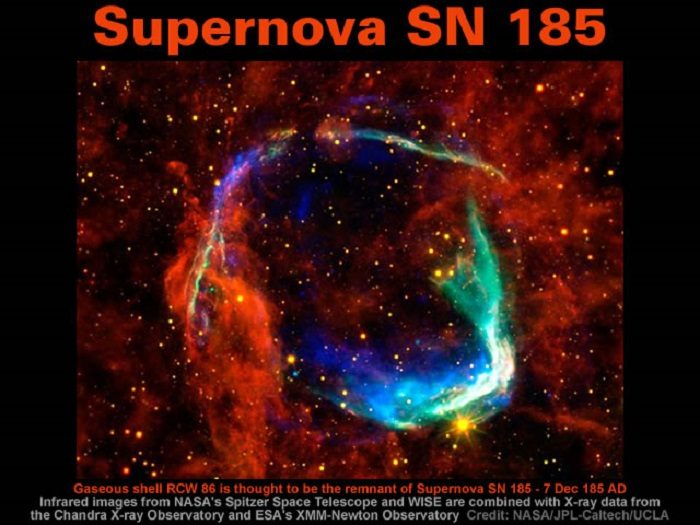

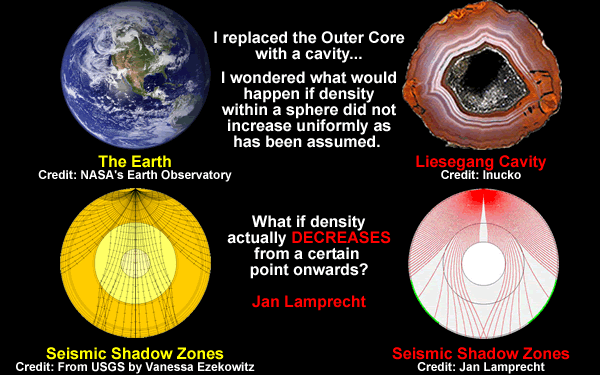
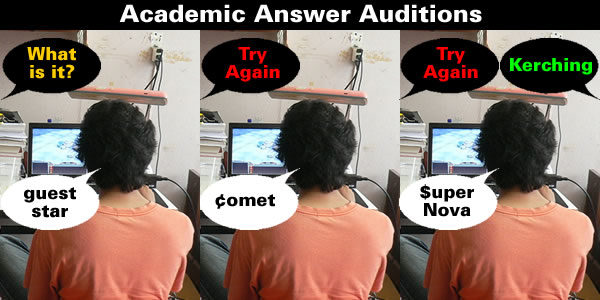
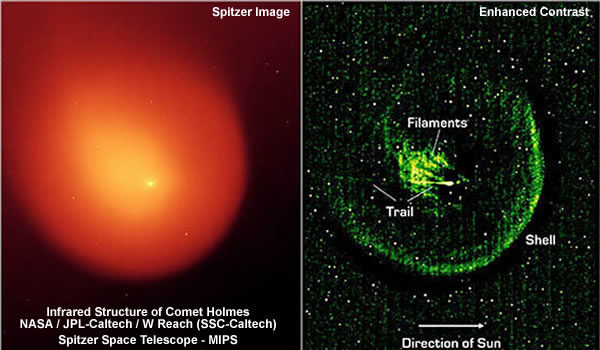
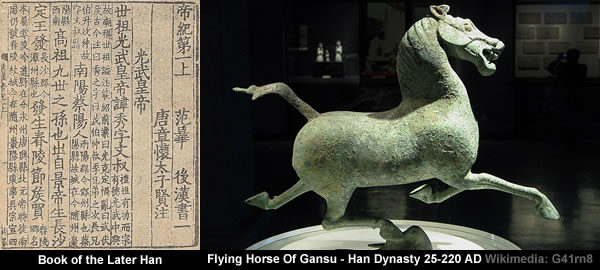
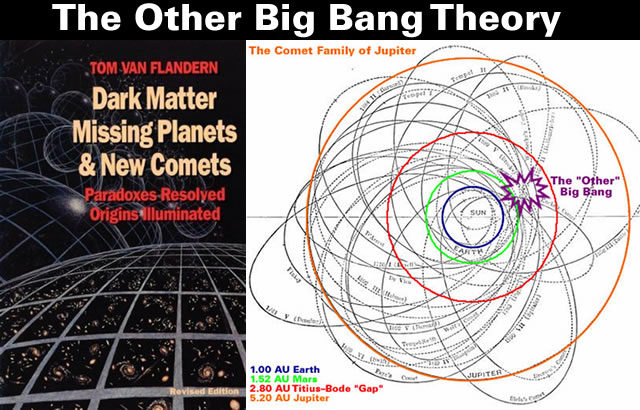
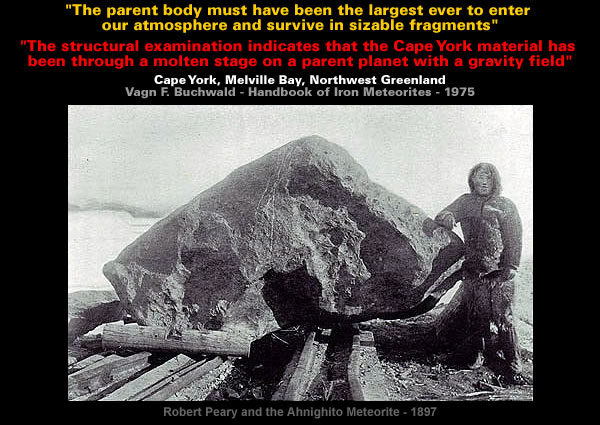
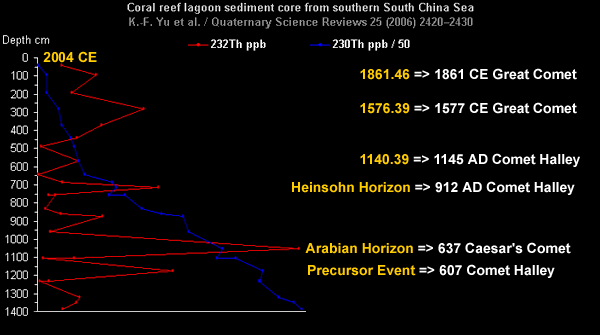
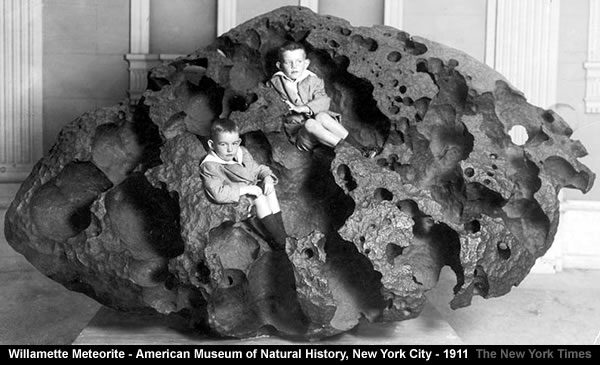



Reader Comments
to our Newsletter